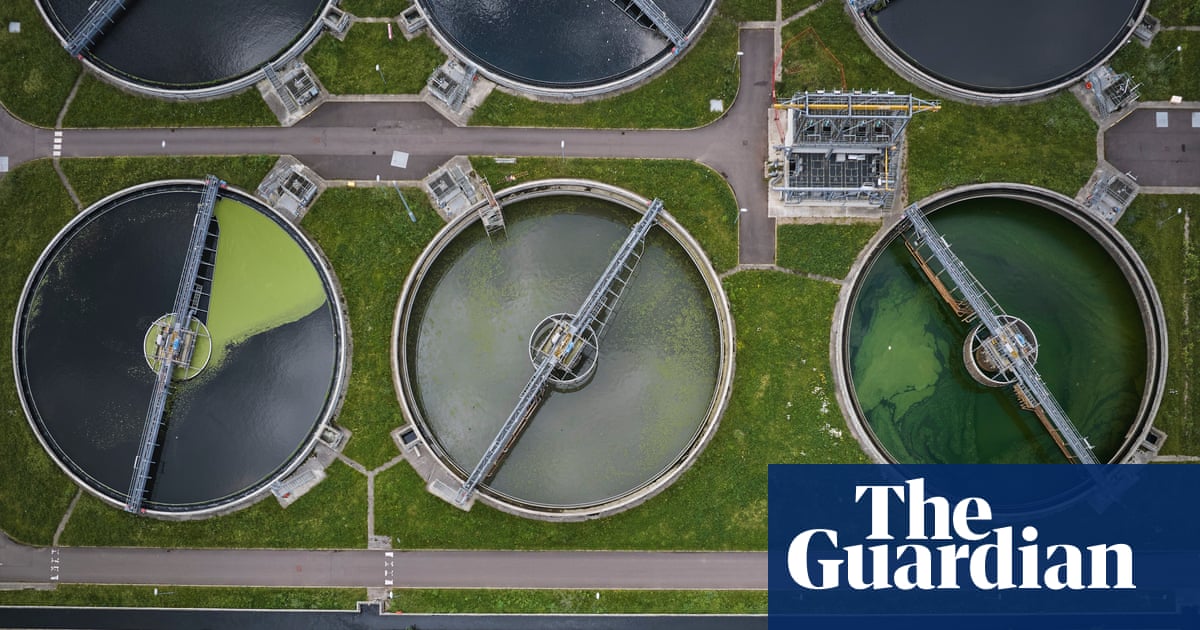The water regulator for England and Wales, Ofwat, is investigating claims water companies are spending many times more on refurbishment projects than operators in comparable countries, leading to much higher bills, in what campaigners have described as a “rip-off”.
Experts have said privatisation of water companies has led to an overinflation of the costs of building infrastructure such as sewage works, as they are less incentivised than governments to find value for money for taxpayers. They are also allowed to borrow more money based on the valuation of their assets.
Bills in England and Walesare due to rise £123on average this year, and go up further over the next five years. This is so companies can fix ageing sewage infrastructure and stop spills of human waste from contaminating rivers and seas. Several water firmshave complainedto the Competition and Markets Authority because they want the regulator to allow them to increase bills even further.
A report by the campaign group Windrush Against Sewage Pollution (Wasp) has found that upgrading a sewage works serving the Oxford area will cost £435m, more than 10 times the £40m cost quoted when the project was proposed. The sewage works is expected to serve between 255,000 and 267,000 people.
In comparison, it cost £29m to build a new sewage works in Assens, Denmark, where the cost of living is on average 13% above that of the UK and the cost of water and sewerage is one of the highest in Europe. It was designed to cater for a population of 100,000, with the capacity to upgrade to 150,000. Sewage treatment works cost less to build in the US, too, where the benchmark cost for a new plant serving approximately a million people is £248m.
Paul Jeffrey, professor of water management at the CranfieldWaterScience Institute, said the fact the industry was privatised meant infrastructure cost more. He said: “There are several good reasons why the amount of money [the water companies] need to spend has risen sharply in recent years. The sector is privatised and is set up to allow companies to recover their investments given fulfilment of a tranche of performance metrics.”
Ofwat sources confirmed they were reviewing the data and said the regulator would ensure water companies delivered value for money when building new infrastructure. A spokesperson said: “As part of this price review period, we’ll be keeping a much closer eye on the delivery of upgrades and infrastructure projects because of the vast increase in investment. That will include ensuring that they are value for money.”
Sources working on Sir Jon Cunliffe’s review into the water industry, which was commissioned by the government last year, told the Guardian they were looking at the figures as part of the review.
Other companies in England appear to price their works similarly highly. For example, the Save Windermere campaign group found a 150-metre extension to a sewage outfall into the lake was estimated to cost almost £13m, or £85,470 per metre.
Anglian Water is spending £400m replacing the Cambridge sewage treatment works, which will serve a population of about 260,000.
Wasp’s Ashley Smith, who conducted the research, said: “Our research mainly covered Thames Water but the fact that the breathtakingly high prices claimed to pay for capital projects has not rung any alarm bells at Ofwat, where they just benchmark the companies against each other, suggests this is a national issue.
“When you look at the comparison between what you can get, for example in Denmark and the US, what you can buy with £435m, that cost can only be regarded as a rip-off.”
Jeffrey added: “The ambitions of carbon neutrality, sustainability, and enhanced resilience, coupled with significant volatility in the prices of raw materials have pushed up the delivery costs of infrastructure projects across many types of civil engineering project (transport, energy, nuclear) and the water sector has not been immune. This isn’t to say that the sector can’t improve the efficiency of its capital projects – a point that has been made by the National Infrastructure Commission on several occasions.”
A Thames Water spokesperson said: “Over the next five years we will deliver a record amount of investment to address our ageing infrastructure. Underlying operating costs have increased by around£40m year-on-year,which has contributed to the increased amounts of planning and delivering these much-needed upgrades. Extra funding is essential in order to address customers’ concerns today and ensure the system is fit for the challenges of the future.”
A United Utilities spokesperson said: “As with all our infrastructure schemes, there are processes in place to ensure we deliver them in the most efficient and cost-effective way possible.”
Anglian Water has been contacted for comment. The industry body Water UK declined to comment.
